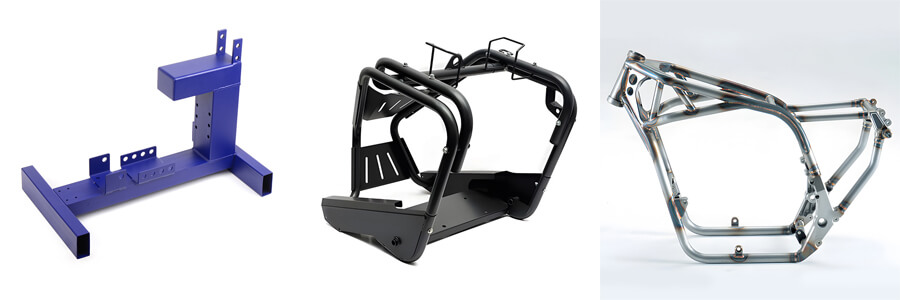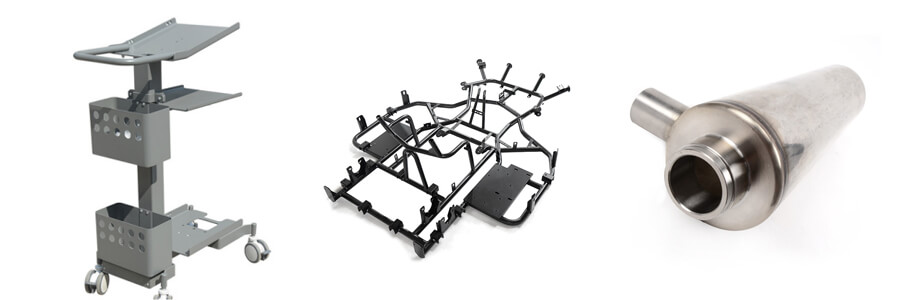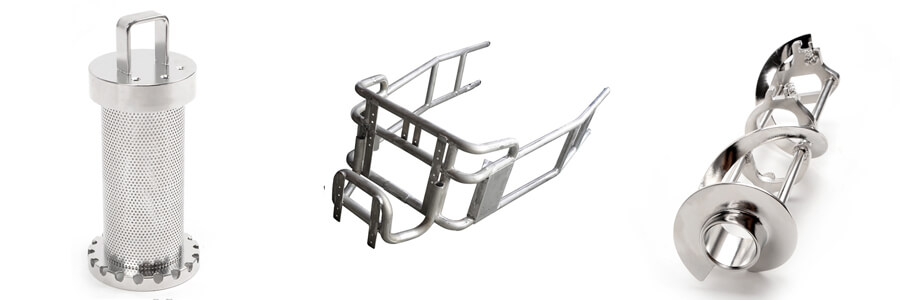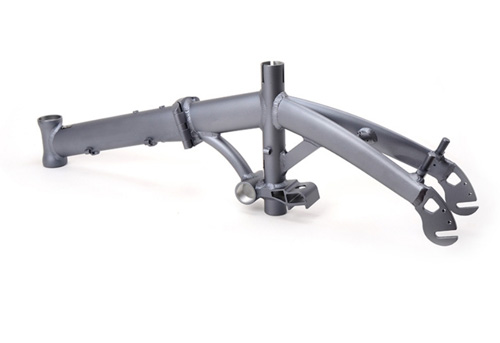Welding in sheet metal fabrication is a process that heats and melts parts of sheet metal to bond them, enhancing their durability or forming a unified item. This technique is prevalent across numerous sectors, including the automotive, aerospace, construction, and equipment manufacturing industries. It is frequently applied to assemble metal frames, cabinets, HVAC systems, and various other metal items.
Among the primary methods for joining sheet metal, welding stands out. Key techniques include fusion welding, arc welding, gas welding, resistance welding, and intense energy welding, each offering unique advantages for different applications.


1. TIG WELDING
Tungsten Inert Gas (TIG) welding is highly esteemed for its ability to yield superior-quality welds. This method excels in joining thicker weldment sections, such as clamps and tubing, which pose challenges for many other welding techniques. Its precision in parameter control offers numerous benefits, enabling TIG to produce weld beads that are more consistent in shape, with fewer imperfections. Consequently, TIG welding is crucial for fabricating weldments of the highest quality.
2. MIG WELDING
MIG welding is one of the most common and versatile welding methods, offering clean, reliable welds on a wide range of metals.
* Cleanliness and efficiency. The process produces clean welds without causing slag buildup or requiring brushing.
* High Speed. Since MIG welding uses a continuously fed wire, the welder doesn’t need to stop and start to replace rods or feed the wire. This results in better speed, quality, and control.
* High-quality welds. Since MIG welding is flux-free, it eliminates the risk of trapped slag. That translates to higher quality welds.
3. RESISTANCE WELDING
This encompasses techniques such as spot welding, seam welding, butt welding, and projection welding. These methods eliminate the need for filler metal, offer high productivity, result in minimal distortion of the welded components, and are readily automated.
4. LASER WELDING
This method provides a rapid welding pace, significant penetration depth, and slight distortion.
It is versatile, allowing welding at ambient conditions or under specific circumstances, and requires only basic welding apparatus.
5. ROBOT WELDING
Robot welding is advised for tasks involving repetitive, high-volume welding. It outperforms manual welding by producing a higher quantity of parts more quickly, reducing waste, and delivering superior quality through consistent precision, all at a lower cost.

Shanghai Yixing has wide range of material welding services like steel welding services, aluminum welding services, stainless steel welding services, red copper welding services and brass welding services. Different material has different mechanical properties (such as tensile strength, ductility, and hardness), chemical properties (such as corrosion and oxidation resistance), and physical properties (such as melting point, thermal conductivity, and electrical conductivity). We will choose the best welding method for different materials based on advantages and disadvantages of the various welding methods.

| Category | Grade | Description |
| Steel | Q235, Q345, S235, S345, DC01, SPHC, SGCC, SPCC, SS304, SS316 etc | Steel is the most common metal material and the main object of welding. Common types of steel include low-carbon steel, medium carbon steel, high carbon steel, stainless steel, etc. Different types of steel require different welding methods. For example, MIG welding and TIG welding are suitable for welding stainless steel, while arc welding is suitable for welding low and medium carbon steel. |
| Aluminum | 2A21/3003/5052/5083/5754/6061/6082/7075 | Aluminum is a lightweight and corrosion-resistant metal material widely used in fields such as aviation, automobiles, and railways. The aluminum welding services require the use of higher-level technologies, such as TIG welding and MIG welding. The use of TIG welding can achieve high-quality welding while avoiding the generation of smoke and odor. |
| Red Copper | C1020, C1100, C2100, C2200, C2300, C2400 etc | Copper is a metal material with conductivity and thermal conductivity, widely used in electronic and electrical equipment. The welding of copper requires the use of high-temperature welding techniques, such as arc welding and oxidation welding. |
| Brass | C27200, C36000, C37700, H63, HPb63-3, HPb59-1 etc |


With our more than 15 years sheet metal fabrication services experience, Shanghai Yixing Technology understands the differences between various welding technologies. That's why we can make wise decisions when choosing the right welding technology for any project from customers. Our welding team has been trained and certified to handle comprehensive welding work on various metals.

We provide MIG, TIG welding, laser welding, manual welding and robot welding of steel, stainless steel, and aluminum material, which also enables our team to handle a comprehensive range of welding projects, from thin and precise welding to heavy, thick coatings, and other high specification metals.

Besides welding assembly, we can also do other assembly like mechanical fastening, adhesive bonding etc. Assembly can be a complex process, and we have a high level of skills and professional knowledge to correctly and safely assemble all parts to avoid any problems with the final product.

Aluminum and aluminum alloys, due to their unique physical and chemical properties, encounter a series of difficulties during the welding process. Specifically, there are several points to consider:
1. Strong oxidation ability
2. Aluminum has a high thermal conductivity and specific heat, resulting in fast thermal conductivity
3. High coefficient of linear expansion
4. Easy to form pores
5. Welding joints are prone to softening
6. Evaporation and burning of alloy elements
7. Aluminum has low strength and plasticity at high temperatures
8. The corrosion resistance of welded joints is lower than that of the base material
9. No color change, making welding operations difficult
Shanghai Yixing has well trained and certified welders to meet customers demands of aluminum welding.
For thin metals, if you are not careful and do not have sufficient control over the heat generated by the welding machine, the metal is easily melted completely. This is what is called burning through.
To weld thin metal, choose an appropriate process (low current TIG or MIG), use smaller diameter welding wires or filler rods, and adjust the travel speed to prevent burn through. Using pulse technology, seam welding, or positioning welding to control heat and allow for cooling time between welds to minimize warping.
1. Using anti deformation method to control welding deformation
In order to offset and compensate for welding deformation, during assembly before welding, the workpiece is first artificially deformed in the opposite direction to the welding deformation. This method is called reverse deformation method. The anti deformation method is the most commonly used method in production, which is usually suitable for controlling the angular deformation and bending deformation of welded parts.
2. Control welding deformation using rigid fixation method
The method of using fixtures, supports, specialized molds, positioning welding, and other methods to increase the rigidity of the structure and reduce welding deformation is called rigid fixation method. The rigid fixation method is simple and easy to implement, and is a commonly used method in production to reduce welding deformation. In production, rigid fixation and anti deformation are commonly used to control welding deformation.
3. Choose a reasonable welding sequence to control welding deformation
The same welding structure, using different welding sequences, often results in different welding deformations. Therefore, the welding sequence that causes the least welding deformation should be selected. Generally, the sequence of assembly before welding is adopted, and the welding deformation of the structure after welding is relatively small.
4. Choose a reasonable welding sequence to control welding deformation
When there are multiple welds on the welding structure, different welding sequences will cause different welding deformations. A reasonable welding sequence refers to: when the weld seam is symmetrically arranged, symmetrical welding should be used; When the weld seam is arranged asymmetrically, the smaller side of the weld seam should be welded first. In addition, methods such as skip welding and segmented back welding have shown good results in controlling welding deformation.
5. Hammering method
By hammering to extend the weld seam, the deformation caused by weld seam shrinkage can be overcome to a certain extent. For example, if wave deformation occurs after thin plate butt welding, a hammer can be used to hammer the weld seam in the length direction to overcome its deformation.
6. Choose a reasonable welding method
Choosing welding methods with relatively concentrated energy, such as CO2 gas shielded welding and plasma arc welding, instead of gas welding and manual arc welding for thin plate welding can reduce deformation.